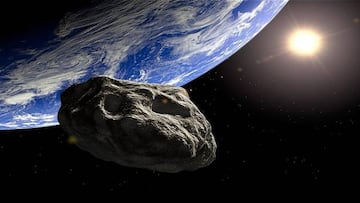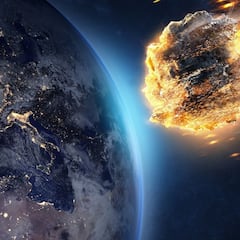An asteroid larger than the Eiffel Tower will pass “exceptionally close” to Earth in 2029
Although the possibility of it impacting Earth was feared, experts have already predicted that it will not do so for at least the next 100 years.

Coming in 2029, an asteroid larger than the Eiffel Tower is expected to skim past the Earth in an “exceptionally close fly-by”, and until relatively recently, scientists feared that it was on a collision course. The European Space Agency (ESA) has announced that it will start work on obtaining information about the size, shape, mass and way it moves through space.
The asteroid will pass 32,000 kilometers from Earth
The aim of researchers is to obtain data about the composition and internal structure of the asteroid called 99942 Apophis, or simply Apophis. As well to collect information about its orbit and they will explore how the asteroid changes as it passes less than 20,000 miles (32,000 kilometer) from Earth, which is expected to be on April 13, 2029. The project will be based on sending a spacecraft to this asteroid, in a mission called Apophis Rapid Mission for Safety and Security (Ramses).
ESA has received permission to begin preparing a mission to rendezvous with the asteroid Apophis. ‘Ramses’ will be designed to accompany Apophis through its close and incredibly rare flyby of Earth in 2029.https://t.co/FS1gzQ7qyv
— ESA Operations (@esaoperations) July 16, 2024
“The flyby it does with Earth is absolutely unique,” said the director of ESA’s space security program office, Dr. Holger Krag. In addition, he added that no asteroid is expected to come that close to our planet in the next few thousand years and added that people will be able to see it with the naked eye if the sky is clear.
The closeness at which this asteroid will pass (even more so than that of the satellites used for television broadcasting, navigation and weather forecasting) could cause landslides on the surface of the asteroid. “Our goal in planetary defence is not to do science on asteroids, but it’s to characterise them in a way that one day we can deflect them when they become dangerous,” Krag said.
The existence of this asteroid has been known since 2004
This asteroid was discovered in 2004 and from that moment kept scientists alert with the possibility that it could collide with the Earth while orbiting the Sun. However, in 2021 experts had already predicted that there would not be a collision in the next 100 years, especially ruled out by NASA in 2029 and 2036.
Space agencies are studying that no space rock approaches Earth
Related stories
The different space agencies continue to study the possibility of preventing any asteroid from approaching Earth, an example of this is the NASA Dart mission. The US space agency tested whether it was possible to deflect a space rock by slamming a spacecraft into the asteroid Dimorphos. According to Alan Fizsimmons, a member of the scientific advisory team, the data collected could help scientists extend the window of time during which they could predict possible collisions with Apophis for many more hundreds of years.
Krag said the new funding for this mission would allow the team to purchase the first hardware for the mission, although the final decision will not be made until the end of next year. This is not the only mission that is preparing to examine the asteroid: after the successful NASA’s Osiris-Rex mission last year, which recovered chunks of 4.6 billion-year-old space rock from the asteroid Bennu, the same spacecraft will rendezvous with Apophis in 2029 under a new mission title, Osiris-Apex.


Complete your personal details to comment